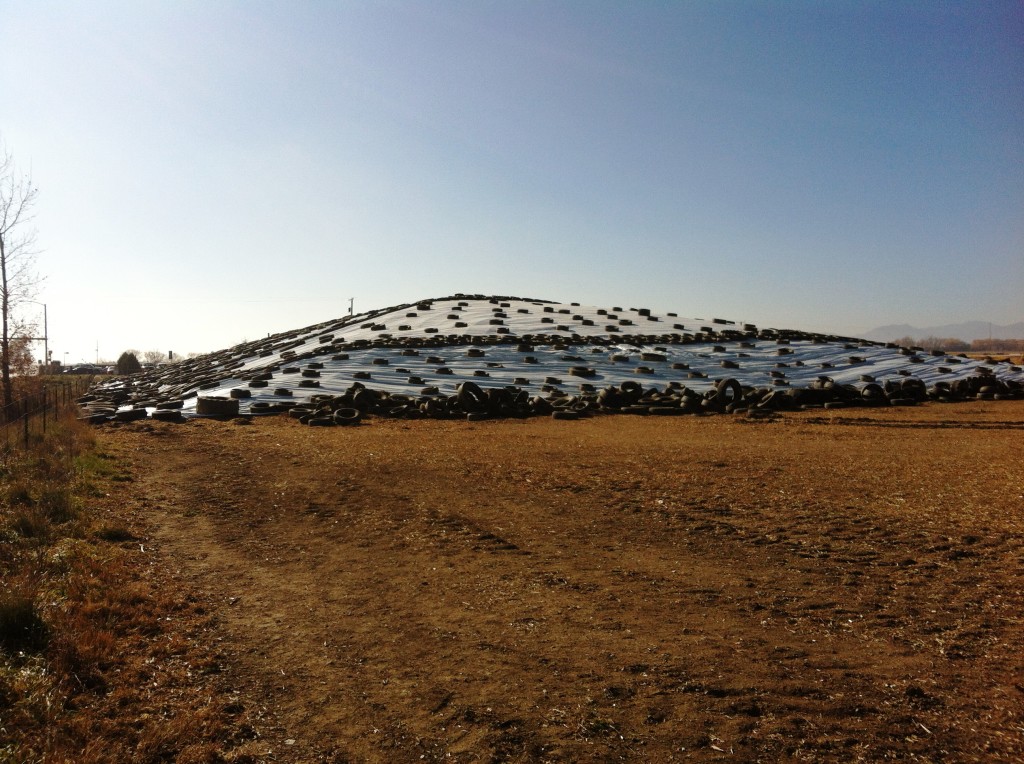The devastating flood event of September, 2013 impacted many farmers and ranchers throughout Boulder County. For some, the expanded rivers washed away critical top soil or took pieces of property downstream. For others, extremely wet conditions delayed and compressed fall harvest schedules, resulting in a need to hire more labor or buy additional equipment to meet deadlines. While extensive damage to the county’s complicated water infrastructure system will have long-term impacts on area food production, in the short term, flooding has required farmers and ranchers to add even more hours to their already full days.
Many open space properties adjacent to streams and leased to livestock operators suffered enormous impacts. Nearly five miles of fencing was lost or destroyed at a cost of $150,000 to the county. During flooding and days immediately following, Boulder County Parks and Open Space (POS) staff worked with tenants to herd wandering cows off roads and build temporary fencing to contain animals while assessing the extent of property damage.
Feeding Strategies Change After Flood
While livestock tenants wait for fencing to be replaced, they are not able to move their herds to fresh pasture, so they are feeding their cattle hay much earlier in the year, and may need to continue to feed hay through the winter. Feeding hay earlier in the season can stress supplies in a normal year, but the flooding and extremely wet weather also extensively damaged area hay harvests. Hay that was cut and laying in windrows in the field was either washed away or too wet to bale. Hay stacked in bales soaked through, sometimes all the way to the ground and quickly molded. Some bales were soaked from the bottom up as ground water levels increased, causing stacks of hay to fall over. After the flood, farmers hoping to cut more hay from their fields have to contend with continuing wet and cool weather that is not ideal for drying and baling hay.
Meanwhile, county-owned irrigated cropland fared relatively well, but continued wet weather and extensive road closures delayed the harvest and seeding of various crops. Area farmers were preparing to start their corn silage harvests on the day the rains began. As the rain turned into torrential floods, the prospect of getting the silage out of the fields and delivered to dairies in Weld County on time was looking less likely. This prompted three POS tenant farmers, Jules Van Thuyne, Famuer Rassmussen and Dan Lisco, to seek out a creative solution with POS and Front Range Dairy, resulting in a large tire-covered silage pile.
A Delayed Harvest
Silage is an easily digested, high-energy feed used for dairy cattle. Silage is made by fermenting wheat, barley, alfalfa hay or corn. In a typical year, silage is harvested then trucked out to dairies in Weld County. There it is weighed, tested for moisture content, chopped into ½ inch pieces and dumped into large silage pits. As the pits increase in size, a tractor rolls over the material to push out any excess air, thus creating an anaerobic environment that ferments the product over the course of two weeks. The piles are covered with large plastic sheets held down by tires to protect the silage until it is fed to cattle.
This year, as the rains delayed the harvest, the moisture content of the silage rapidly decreased. The concern was that if the silage didn’t get out of the fields, it would be too dry and not ferment properly. Once the three farmers were able to get into their fields, they found that the amount of mud they had to contend with was slowing down cutting time. Likewise, damage on Hwy 52 nearly doubled the time needed to deliver silage.
After talking to POS, the decision was made to create a silage pit on the northwest corner of Highway 287 and Niwot Road. Front Range Dairy further assisted by providing a silage chopper for the farmers to use and buying their silage as it was weighed and piled at the site. Now the silage can be delivered to the dairy over the winter as needed. Without these collaborative efforts, it is likely that POS tenants would have incurred further economic impacts from the September 2013 flood.



